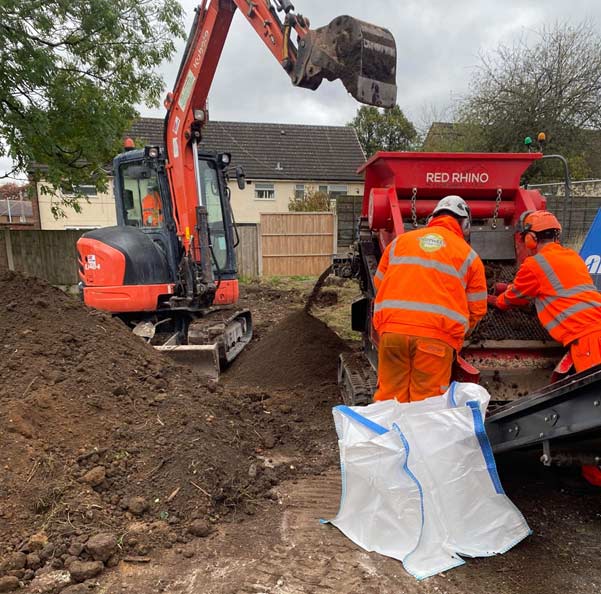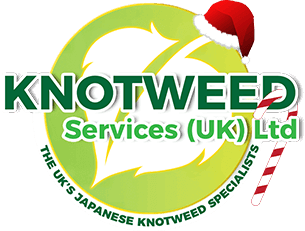JAPANESE KNOTWEED REMOVAL Hereford
2
LIVE KNOTWEED JOBS IN Hereford
101
SUCCESSFUL KNOTWEED REMOVAL PROJECTS IN Hereford
100%
SUCCESSFUL PROPERTY SALES AFTER TREATMENT
1
Hereford BASED KNOTWEED STAFF
NO OTHER JAPANESE KNOTWEED COMPANIES IN Hereford HAVE OUR TRACK RECORD
Japanese Knotweed Removal Hereford is our specialty. We treat Japanese Knotweed – and we do it with care and precision – offering you peace of mind and a longer lasting solution.
We are accredited by the PCA, a government-approved trade body for “the damp, waterproofing, wood preservation and invasive weeds industries.” We are experienced in Japanese knotweed removal.
We have used our expertise in knotweed eradication to complete a number of challenging projects in and around Hereford and England. For knotweed removal to be successful, experienced identification, surveying, treatment, and control must take place. We can help.
What is Japanese Knotweed? All you wanted to know about that plant growing in your garden
Homeowners, investors, and commercial property owners are affected by Japanese knotweed. If you’re a home owner, your lender probably won’t lend against a property with an infestation.
If you’re a commercial land or property owner and Japanese Knotweed is present, your project may end up being delayed until or whilst your infestation is being dealt with correctly and legally.
How bad is Japanese Knotweed?
- Japanese knotweed can grow through tarmac or concrete, threatening the stability of building foundations.
- In some instances mortgage lenders will not lend on a property that has been affected by Japanese Knotweed.
Knotweed produces massive annoyance that obstructs visibility and access to paths, highways and other infrastructure. It is a particular nuisance for commercial properties.
Knotweed Services For customers in Hereford with Japanese Knotweed, we should be your first call. We’ll always ensure that the knotweed is removed entirely and our warranty guarantees (insurance-backed guarantee available).



FREE IDENTIFICATION
Fill in the form below, attach your pictures and we’ll let you know if the plant in your picture is Japanese Knotweed.
Call Knotweed Services ASAP to start the treatment and management of your infestation in Hereford
Call us on: 0121 725 6348 or 0800 689 4146 for an swift quote
Once you contact Knotweed Services, we will help you through the process at each stage.
RESIDENTIAL JAPANESE KNOTWEED REMOVAL Hereford.
WHAT YOU NEED TO KNOW ABOUT JAPANESE KNOTWEED REMOVAL Hereford
Knotweed services vary greatly. If a Japanese knotweed infestation is severe, you may need one method of removal or a combination of multiple methods.
We survey your knotweed problem and use the most effective methods for each growth stage, which allows us to deliver high-quality results that will produce a long-term solution. Our methods go beyond chemical treatments to identify root problems and prevent any future occurrences.
— JAPANESE KNOTWEED REMOVAL OPTIONS AVAILABLE IN Hereford

FOLIAR SPRAYING *
Spraying of powerful chemicals with a knapsack is the most common treatment for Japanese knotweed. We ensure that other plants are not damaged when spraying, and we spray only in springtime.

FOLIAR LEAF WIPING *
With this Japanese knotweed treatment, our chemicals are “physically wiped” into the leaves of the Japanese knotweed using a device. This application is so accurate that we can frequently employ a greater chemical concentration.

STEM INJECTION
We directly administer a measured amount of herbicide to the invasive weed. Due to the injection directly into the Japanese Knotweed, this is the most ingenious elimination technique. It is not affected by the weather.

BIOMASS REDUCTION
We only remove the soil that has been afflicted with Japanese Knotweed when we use biomass, which is a type of excavation and removal. Reusing the soil makes it a great approach for controlling Japanese knotweed. decreasing landfill usage.

CROWN REMOVAL
Crown and stems are capable of regeneration, and even minute fragments of clipped crown or stem are capable of regeneration and producing a new invasive weed — eliminating these components is a wonderful technique.
— COMMERCIAL TREATMENT OPTIONS AVAILABLE IN Hereford

SOIL SCREENING
A tried-and-true methodology utilised on hundreds of sites across the UK.
The rhizome material of Japanese knotweed is removed from the soil material using the screening procedure. The Japanese knotweed debris is then either transferred to a licenced landfill at a significantly reduced disposal rate or burnt on site using a D6 exemption from the Environment Agency or Natural Resources Wales.
The cleaned soils can subsequently be used elsewhere, typically in soft landscaping areas where they will not interfere with construction.
This can greatly cut landfill and backfill expenses while also helping to minimise the carbon impact on site due to fewer truck travels to the dump.

BIOSECURITY SUPERVISION
To keep an eye on any digging or shifting of soil containing Japanese knotweed on your property, we can send a biosecurity worker.
We can set up a location where individuals can wash their boots and equipment at the site entry as a part of these precautions. We will supply the primary contractor with all toolbox discussions, which will be signed by all other contractors involved in the operation on site.
In locations where biosecurity is essential, we are able to offer temporary geotextile barriers.
After the service is over, we will deliver a thorough biosecurity report to the client.
This technique can be used in conjunction with other on-site therapeutic strategies.

EXCAVATION AND DISPOSAL
This treatment method is ideal where time constraints are present and there’s no other option other than to remove both the Japanese Knotweed and contaminated soil to a registered landfill.
By removing all traces of the infestation quickly, this offers a rapid solution to your problem and allows your commercial project to begin groundwork’s almost straight away. When time is of the essence, there is no quicker Japanese Knotweed removal/treatment method.
Any waste taken off-site will be done so with a licensed waste carrier to a suitably authorised landfill site.

CELL BURIAL
Cell burial comprises of moving Knotweed contaminated soil from one location on site, burying it in an excavated pit which is lined with a root barrier membrane, in a different position on the site.
The burial requirements for Japanese Knotweed are as follows:
- The Environment Agency recommends that the top of the burial cell should be a minimum of 2 metres below ground level.
- The overall depth of the burial pit should be in excess of 5 metres deep. All root barrier seams are welded together forming an encapsulated cell from which the Japanese Knotweed cannot escape. Clean soil is then used to backfill on top of the cell.
- To prevent accidental disturbance of the burial site, it is recorded on all site plans and future land owners should be made aware of the location.

STOCKPILE & TREAT
Japanese knotweed-contaminated soil can be moved to another portion of the site being treated using a technique called bunding. A bund is a patch of polluted soil that is only a few metres deep.
To make the surface flush with the surroundings, the bund can either be lifted, placed on top of the land, or positioned inside an excavation.
The bund’s function is to relocate the Japanese knotweed to an inactive portion of the land. The Japanese knotweed may now be treated, which would not have been possible in its original location.

HERBICIDE APPLICATION
At Knotweed Services we can provide the client with bespoke treatment plans depending on the locations of the Japanese knotweed.
These plans can work in conjunction with other methods of treatment where access is limited to pedestrian movements i.e., embankments or existing pathways within a site.
This will normally consist of up to 3 visits per annum to apply herbicide by either foliar spray technique or stem injection during the growing season over a period of 3 years, with a monitoring period of 2 years thereafter.
We would select the appropriate herbicides depending on the surrounding foliage or environmental constraints.
After each visit a full treatment record would be provided with photos showing the progress of the works and then an annual report.
